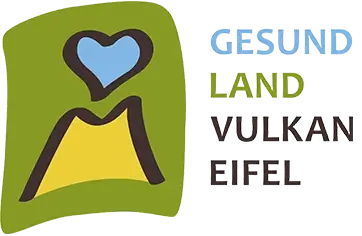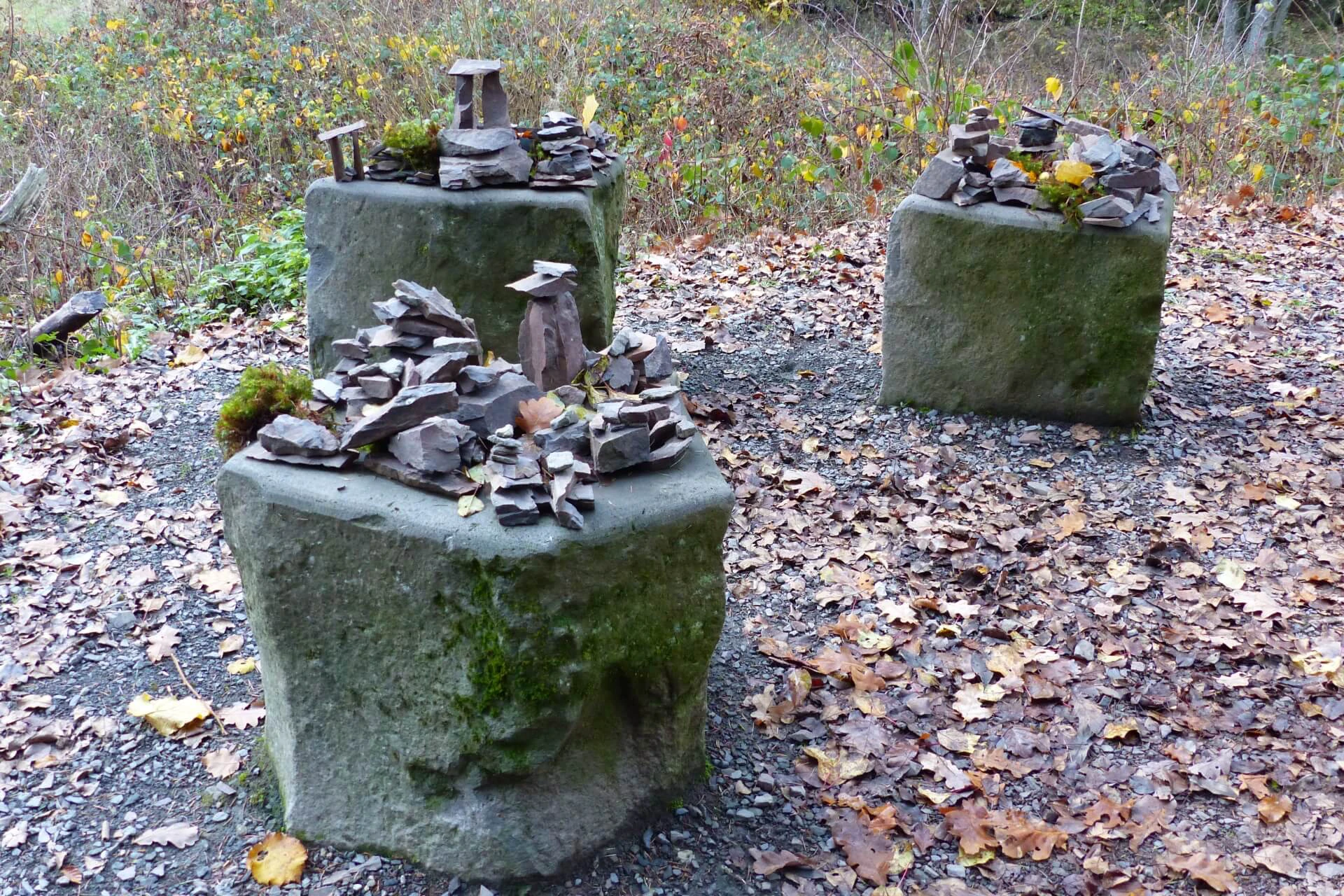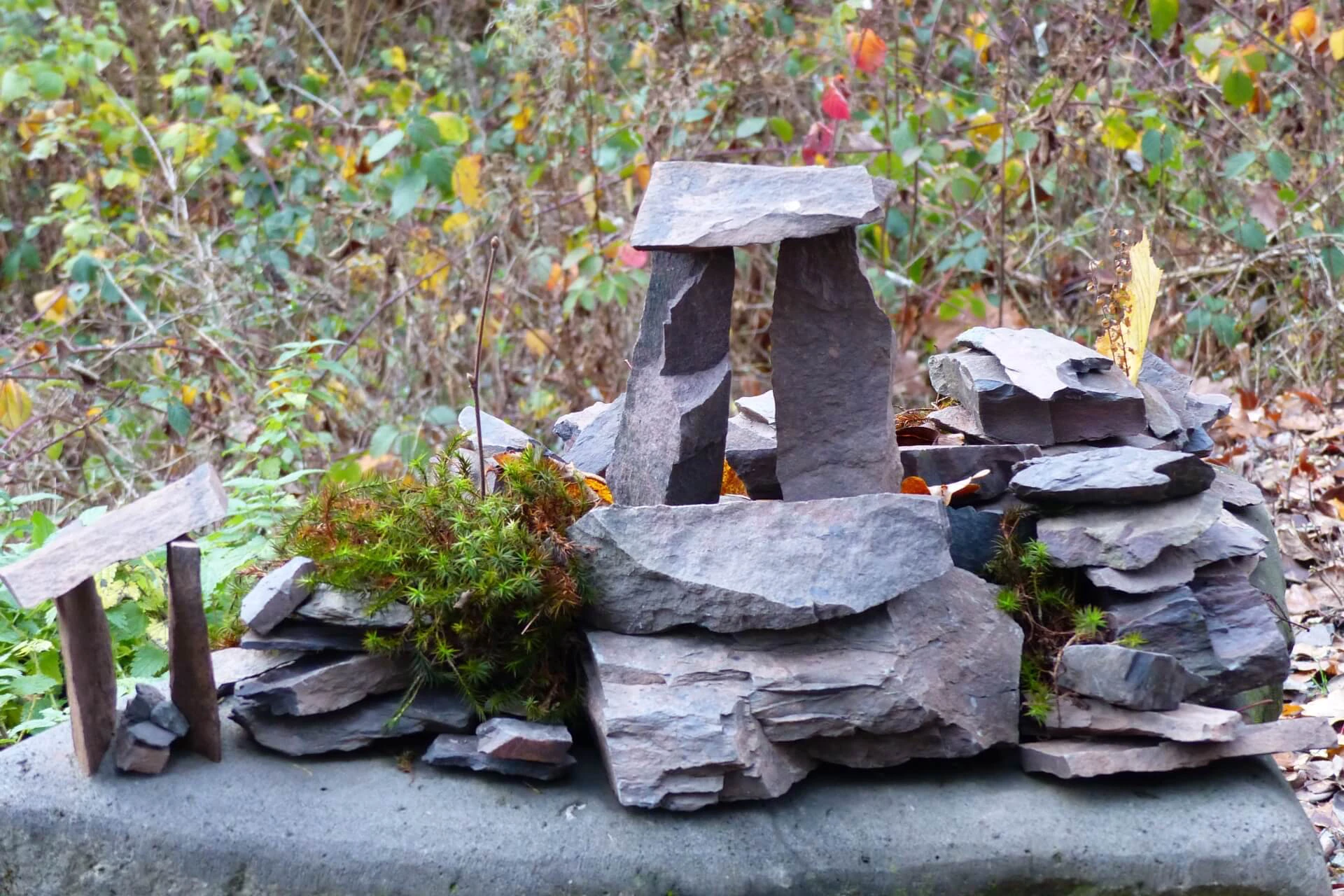Hike through volcanic craters on the mindfulness trail
On a Wednesday in November, I was out and about with part of the GesundLand team on a guided tour of the Kleine Kyll mindfulness trail. Accompanied by landscape mentor Deepti Statnik, the tour began at the Heidsmühle in Manderscheid. Although the Eifel was still covered in fog in the morning, the sun was able to fight its way here and there between the thick autumn clouds.
Before we get started, Deepti Statnik briefly introduces herself. She did her training as a landscape mentor for GesundLand Vulkaneifel in 2013/2014 and is also a yoga teacher. Deepti explains that at first we just walk along the path for a bit. Whether or not we talk to our neighbors along the way doesn't matter.
Here we go. Although the fog has lifted, it is still quite fresh. After a short distance Deepti stops us. She now wants to do a little exercise with us. While walking, we should consciously look around in our surroundings. What does nature show us? We should not only look straight ahead at the path that lies before us. But also upwards, to the sky, and to the sides.
That's what I do then. The color of the sky above me is somewhere between gray and blue. Tree tops limit my view upwards. To my left it goes down a small slope, while to my right it goes up a small hill. I notice that the forest on my right is thinner than on my left. The trees are further apart there.
The path leads us out of the forest again. We stop at a piece of path that the sun catches fully. Here it is immediately a few degrees warmer. Deepti wants our group to spread out generously on the sunny spot. We should have as much distance to our neighbors as possible. Immediately she shows why: With the next exercise we are to become free. Those who want to can close their eyes. If you don't want to do that, you can look for a spot in the landscape that you particularly like - a treetop, a hill, whatever it is. Deepti closes her eyes and swings her arms gently back and forth. I do the same. To this she tells of a bird that soars to ever greater heights until it has had enough and returns to earth. Deepti brings us back to the here and now. When I open my eyes, I have to blink - the sun shines too brightly in my face.
After this short break, the trail continues. The path leads into the forest again. Here a new exercise awaits: Deepti asks us not to speak to each other for the next part of the way, but to pay close attention to our surroundings. We are to look alternately into the distance and into the proximity and observe exactly what we notice. What exactly we should notice is left open by Deepti. We start moving and I look down at the forest floor below me. There, everything is full of needles. Close together, shed by the trees above me, the needles lay out a soft, rust-red carpet in front of my feet. I wonder how many needles there are in a forest like this?
I let my gaze wander into the distance. There, rows and rows of fir trees stand close together. Although their branches reach almost all the way down, the fir cones of the trees are almost only in the crown. The higher up in the tree, the more cones hang together. While there are only isolated cones in the middle of the tree, there are so many at the top that the branches bend downward. Through the smaller trees that line the firs, I first notice how far they stretch into the sky. My gaze returns to my immediate surroundings. While some trees stand dead straight, others are crooked and hunched.
Deepti brings us back to the here and now. We stop at the small spring. Even on this rather gloomy November day, the water bubbles merrily out of the earth and makes its way through the thicket until the eyes can no longer follow it. In the past, Manderscheid's entire water supply was carried by this small spring. Deepti invites us to taste the water. I am skeptical - for me, delicious water must be alive and have carbonic acid! Nevertheless, I let her give me a cup and I'm amazed: even I, as a bubble fanatic, could drink this water every day. Although it is just as tasteless as tap water, it tastes much better to me.
At the source we do another small exercise for mental relaxation. Each of us is supposed to recall the last thought that came to mind. I stand there with my eyes closed and think: What was the last thing I thought? I can't think of it anymore. And so I just stand there and think - nothing. I only hear the gurgling of the small spring and birds chirping in the treetops. The exercise has served its purpose!
We set off again. After a short time, we come to the ear trumpet. It stands here at the side of the path, waiting for the hikers to put on their ear to listen. I try it. The ambient noises sound simultaneously muffled and yet also much louder. Everything behind the ear trumpet sounds quieter, more distant. Everything after which the funnel of the ear trumpet opens, on the other hand, sounds sharper, clearer, more immediate. At this point I could stop longer, because here you hear mainly the relaxing gurgle of the Kleine Kyll.
The humming stone stands only a few meters away from the ear trumpet. It is something very special. It takes some effort to stand up and put your head into the hollow in the stone. But if you put your hands on the sides of the stone and start humming, the vibrations are transmitted to your whole body. An extraordinary experience! Deepti also thinks so, encouraging us to hum into the stone more than once.
Directly after the humming stone follows the dendrophone, my favorite station. Here 6 copper tubes of different lengths hang freely from a wooden construction. A small wooden stick invites to make music. I take the initiative and strike a few notes. The pipes make very soft sounds, which are carried by the air in the direction of the Kleine Kyll. I almost wish that there were many more copper pipes hanging there, so that there would be a greater variety of sounds and one could compose in a very varied way. In any case, it is certain that at this station even the musically untalented like me have their joy.
While we go on, we meet a hiker for the second time and also a biker makes his rounds here, for which we have to make room more often. We reach a wooden bridge. "Who goes barefoot, no shoes press" calls here a quotation to make oneself free from everyday constraints. We are at the barefoot bathing place. Different types of surfaces such as clay, stones and sand can be felt under the feet here. Due to the wet and cold temperatures, I would prefer to forego this experience, even though it is certainly worthwhile. No one wants to dip their toes into the Kleine Kyll this afternoon either.
After this station has turned out a little shorter, we still stop at the Marienhütte. At the foot of the hut, Deepti would have liked to invite us to take a rest while sitting down - but the seats are already occupied by stone artworks that crowd the narrow area here close together. With a lot of tact, previous visitors have piled up stone after stone to form filigree stone sculptures and stone houses. I wonder who took the time to do this and whether he might return to finish his work. Maybe he built the whole thing in several stages or had some assistance with his artwork. The nearby bench has also been converted into a gallery. In this artful environment, Deepti asks us to pause one last time. While I close my eyes, I concentrate again especially on the sounds around me. The wind strokes through the leaves, which still cling valiantly to the branches of the trees. The murmur of the Kleine Kyll can only be heard softly. Deepti concludes our walk with a short yoga exercise.
Back at the Heidsmühle, I'm almost a little sad to have seen only part of the Kleine Kyll mindfulness trail. Especially in spring and summer, I imagine the circular path as a real nature experience that sharpens the senses. I firmly intend to join a full guided tour when I get the chance.
Author: Valerie Schneider
By submitting the form, you agree to our privacy policy.





